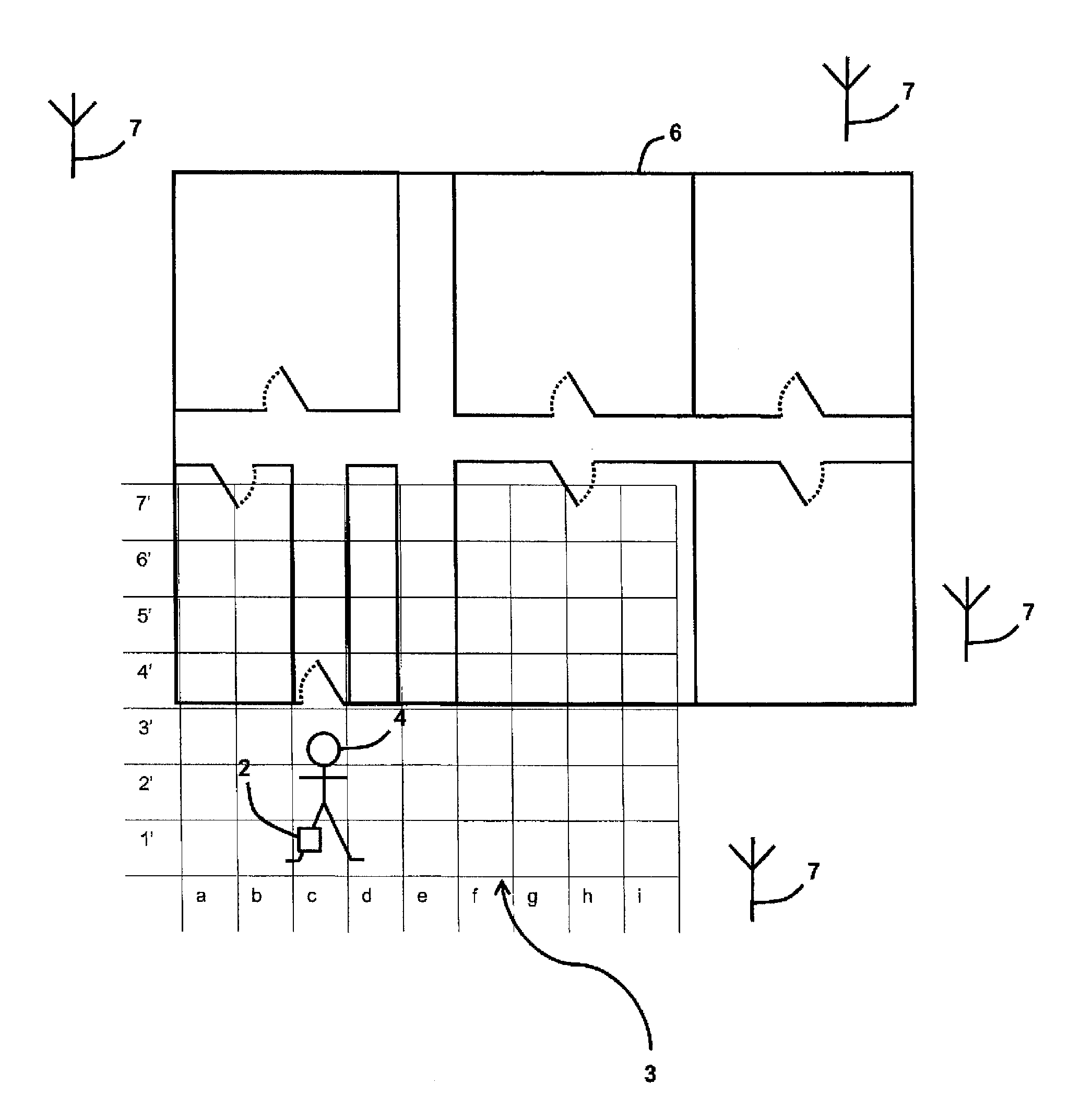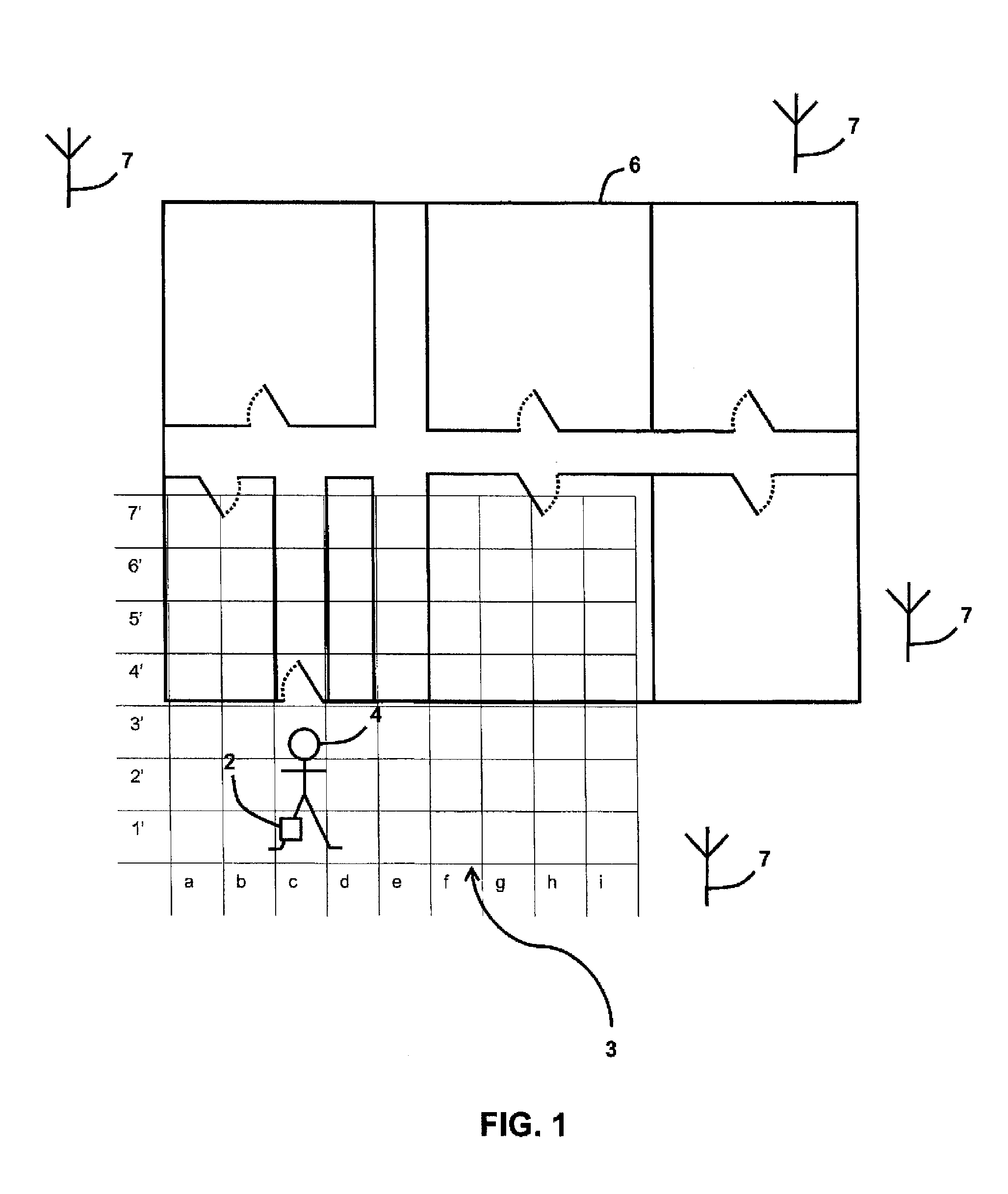Tracking algorithm
a tracking algorithm and algorithm technology, applied in the field of tracking, can solve the problems of complex signal variations and simple propagation calculations that are too complex for traditional radio positioning methods to function satisfactorily
- Summary
- Abstract
- Description
- Claims
- Application Information
AI Technical Summary
Benefits of technology
Problems solved by technology
Method used
Image
Examples
Embodiment Construction
[0037]FIG. 1 is a schematic illustration (not to scale) of a scenario in which an embodiment of a tracking device 2, mounted on a human user 4, is used to generate a radio signal strength map of an area 6.
[0038]The terminology “radio signal strength map of an area” is used herein to refer to a map which provides, for a given point on the map, a magnitude of an electromagnetic field at that point. In this embodiment, a map may be provided in any appropriate way, e.g. pictorially or in data form. A radio signal from which a map is generated may be any appropriate signal or combination of signals, for example, a Wi-Fi™ signal, a Global System for Mobile Communications (GSM) signal, a General Packet Radio Service (GPRS) signal, etc.
[0039]In this scenario, the tracking device 2 is mounted on a shoe of the user 4.
[0040]The tracking device is described in more detail later below with reference to FIG. 2.
[0041]In this scenario, the area 6 is an area inside a building, for example a floor of...
PUM
 Login to View More
Login to View More Abstract
Description
Claims
Application Information
 Login to View More
Login to View More - R&D
- Intellectual Property
- Life Sciences
- Materials
- Tech Scout
- Unparalleled Data Quality
- Higher Quality Content
- 60% Fewer Hallucinations
Browse by: Latest US Patents, China's latest patents, Technical Efficacy Thesaurus, Application Domain, Technology Topic, Popular Technical Reports.
© 2025 PatSnap. All rights reserved.Legal|Privacy policy|Modern Slavery Act Transparency Statement|Sitemap|About US| Contact US: help@patsnap.com



